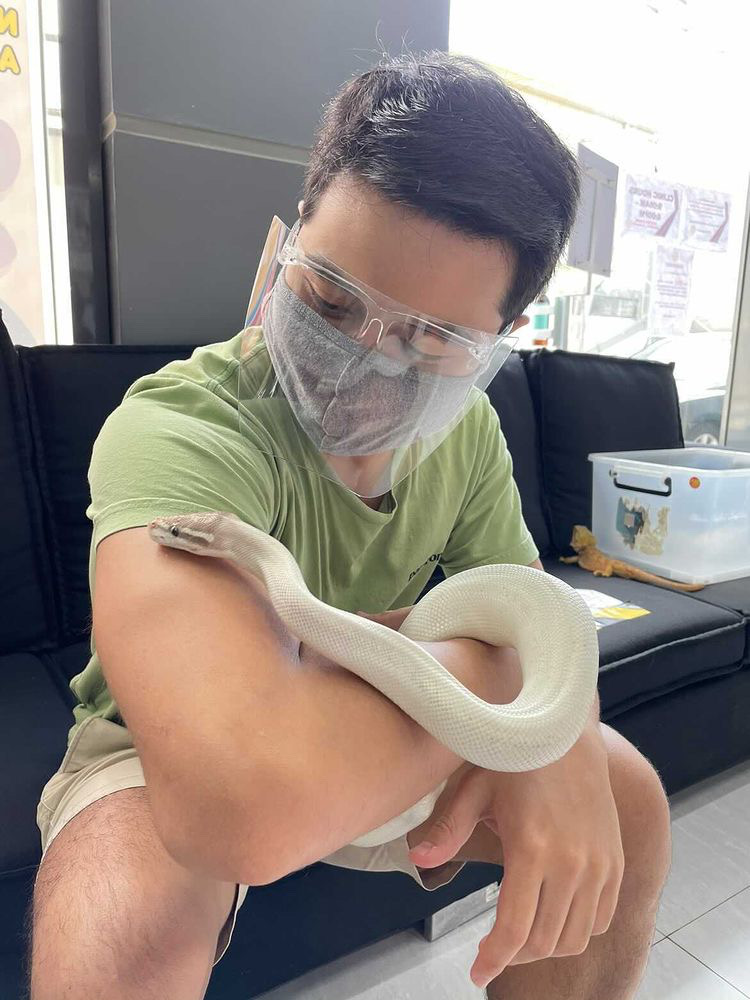
Leopard Geckos, a Bearded Dragon —They go beyond the cuteness level. Here’s what you should know
I’ve always loved animals.
Ever since I was young, I had grown up on episodes of Steve Irwin’s “The Crocodile Hunter”, Jeff Corwin’s “Going Wild!”, or even Animal Planet’s “The Most Extreme.”
While I enjoyed playing with action figures, model cars, and toy soldiers, I would always gravitate towards my collection of Schleich animal figurines.
Everything about animals fascinated me– the way they looked, the way they moved, and their diverse personalities. I was determined that I would grow up and be a zookeeper, collecting the most rare specimens and working for conservation, just like my TV idols did.
But as time passed, so did my interest in wildlife conservation. But as the pandemic rolled around and stripped me of all other distractions, I found myself once again diving into the rabbit hole of exotic pet keeping.
I had kept exotic pets. As a child, I kept iguanas, two sugar gliders, and was keeping a tortoise. At the time, I had no idea how to properly take care of these animals, I thought simply loving them and keeping them fed would provide them a decent life.
It was only when my revitalized curiosity in exotic pets led me to read various books and articles, and to watch videos that I understood how complex keeping these animals could be.
Since the lockdown began, I was fortunate enough to adopt some exotic pets through the legal trade here. These include a Sulcata Tortoise named Sam, two Leopard Geckos (named Merry and Pippin), a Bearded Dragon named Aslanne (because Aslan turned out to be a girl), a Moroccan Uromastyx named Gimli, and a Ball Python named Shadowfax.

So if you’re considering taking up the exotic pet hobby, maybe after you’ve seen someone post about his/her unique pet on social media, know that it’s something I really believe could be a formative and enriching experience– for both you and the animals– as long as it’s done legally and following certain guidelines.
Here are some of the things my unique animal friends have taught me thus far:
- Research is important. Every animal has different needs. Early on, I learned that snakes and Leopard Geckos don’t need special lighting or heating, but Bearded Dragons, Uromastyxes, and tortoises do need them! Setting up UVB lights in the enclosures of the latter helps them absorb calcium and grow properly, and without it they could lead stunted, diseased lives. Moreover, some animals need to eat every day, others only weekly. Some animals need vertically aligned enclosures, others need only compact spaces. Different animals have different needs, and I feel like this lesson could easily be extended to the rest of life as well. When you’re dealing with people, it’s important to understand that everybody is coming from somewhere else, and the best way to deal with them is by trying to understand the environment they’ve come from.
- It’s important to source your pets legally and ethically. The Philippines, and the Southeast Asian region in general, is so rich in biodiversity, and thus it’s become a hotspot for illegal pet trade– especially on social media. Many beautiful local animals, such as monitor lizards, sailfin dragons, snakes, civets, and monkeys, are poached directly from the wild, degrading the natural world, and bolstering the illegal poaching industry. But there are many pets, like Leopard Geckos, Bearded Dragons, and tortoises, that have been domesticated for decades now. It’s these kinds of pets that are both more docile and more ethical to keep. Thankfully, there are now many pet stores around the country that produce their own rare species through captive-breeding– and that not only sustains the pet trade but also helps in conservation!
- Finally, the most important lesson I’ve learned from exotic pets is how they’ve taught me to respect nature and all living things. It’s easy to love dogs because they so often show affection to their owners, easily bonding with them. It’s a bit more difficult to learn to love lizards and other reptiles, since each species requires some unique dietary or housing requirement for them to thrive in captivity. But I believe there are benefits from keeping the latter– you are able to learn that not every animal is going to give you attention when you call their name, not every animal exists to satisfy your cuteness craving for the day. Most animals are aloof, wary of humans– and rightfully so! Nevertheless, I believe all animals, if they are treated right and with respect, can learn to trust people, if only we give them the respect they deserve. Is that not the very spirit of conservation?

Over all, keeping exotic pets such as birds, reptiles, and amphibians is a vastly rewarding hobby– but I believe it should be done only after knowing full well what you can get out of it (a unique household companion), after knowing full well what you can learn from it (respect of nature), and if it is conducted in a legal manner.
So if you’re planning to get an exotic pet, make sure it’s from an ethical source, and buy only animals with the proper legal papers.

Main photo: The author posing with a super mojave ball python





